Getting Lost in The Louvre
- AMCL Schatz

- Jul 17, 2022
- 8 min read
Visiting The Louvre, is of course, one of the top "Paris Essentials," especially for first-time visitors. It is one of the most awe-inspiring museums in the world, with its 73,000-square meter exhibition space featuring 70 rooms of magnificent art work. A visit there is akin to taking a crash course in history and fine arts from as early as the 7th century BC to the mid-19th century.
This former fortress and royal palace has three sections - the Denon, Richelieu, and Sully wings - all packed with a treasure-trove of masterpieces and the most valuable paintings, sculptures, and other objects of art.
I could hardly contain my excitement, but at the same time, I also had to manage my expectations. With 70 rooms in each wing, it would take about three full days to see everything. I was well aware that with our limited time, our guided tour would only focus on the "Great Ladies of The Louvre," namely, the Mona Lisa, Venus de Milo, and the Winged Victory of Samothrace, along with a selection of masterpieces. The good news was, this pre-booked tour allowed us to skip the ticket lines and it came with a professional guide - an art aficionado, who provided engaging stories and and background information about the art pieces.
First, we went to the Sully Wing to see the Greek beauties - Venus de Milo and the Winged Victory of Samothrace. The former was discovered in the Greek island of Melos (Milo in Greek) and was presumed to be the sculpture of the goddess of love due to her sensual form. She is missing her arms, which adds to the mystery of how she may have looked like in her complete form. Depicted half-clothed with a bare torso and her tunic falling off her hips, it is hard to believe that she is made of marble. The draping and folds of the tunic looked so realistic that I was almost tempted to reach out and adjust her clothing.
The Winged Victory of Samothrace has her own space at the top of the Daru staircase. Headless and winged, the goddess of victory, Nike, stands proudly on the prow of a ship, as if leading a naval attack. In fact, when the statue was found on the island of Samothrace, it was believed to have been sculpted around 190 BC to commemorate the naval victory of the people of Rhodes. This masterpiece is another proof that under skilled hands, a slab of stone could truly come alive. The details of the statue were unbelievably life-like that it appears like she is about to take flight with her right leg stepping forward and her wings held back. I almost expected them to start flapping. Her clothing also looked like it was made of light fabric drenched in water and clinging to her body, while the dry parts are billowing in the wind. That was one of those moments when I realized that photos of art pieces do not do them justice. You really have to see them up close to appreciate the craftsmanship.
Unfortunately, I did not have the chance to see the Mona Lisa up close. Located at the Grand Galerie of the Denon Wing, Leonardo da Vinci's most famous portrait is the most popular art piece in this museum. Many visitors go to The Louvre just to see this painting, so it was not a surprise to see a crowd of tourists already jostling their way to get closer to it to take pictures.
The painting is a lot smaller than I expected it to be and it is covered with an extra layer of plexiglass, which is bulletproof. This was because in years past, the Mona Lisa had been the target of theft and vandalism. People had tried to throw things at it - a stone, a coffee mug, and even acid. However, the glass is extremely clear and transparent, so one can admire the painting in all its glory. As well, a tiny spotlight is installed on a shelf in front of the painting to compensate for glass reflection and to bring out its colours.
After a few minutes of attempting to get closer, I succeeded (that was the closest as anyone could get), but the photo I hurriedly took, did not come out too well. I blame my camera for the defocused shots...and the lack of space to properly frame them...because people were there left, right, centre, front, and back. I, however, had enough time to see what the fuss was all about.
The Mona Lisa, thought to be the portrait of Lisa Gherardini, wife of Francesco del Giocondo, who was a silk merchant in Florence (hence, its Italian name is La Gioconda and translated as La Joconde in French), has indeed the most enigmatic smile and sideward glance. Our guide told us that wherever one is standing in the room, Mona Lisa would appear to be watching the viewer. And yes, I was able to prove it! It could be an optical trick, but still very intriguing.
Our guide showed us some more famous work of Western painters, particularly the Italian masters on this wing - more of da Vinci, Botticelli, Raphael, Titian, Caliari, and others. My favourite is the gigantic "Le Sacre de l'Empereur Napoléon Ier (The Coronation of Napoleon)," a painting commissioned by Napoleon I himself to commemorate his coronation after he proclaimed himself Emperor following his victorious military campaigns in Italy and Egypt. This six by ten-meter canvas is grand enough to give anyone the impression that he is actually watching the coronation ceremony. In fact, Napoleon, upon viewing the finished painting, actually said, "One can walk through this painting!"
We were given some free time to roam on our own. Without a guide, once can easily feel lost. The museum is vast and the collection is simply immense. Half a day was definitely not enough, so I decided to concentrate on a few sections – the Greek, Etruscan, and Roman Antiquities exhibit; the Near Eastern Antiquities exhibit; and the Egyptian Antiquities exhibit.
I was happy to have the opportunity to set foot in this grand museum but at the end of my tour, I was left wanting. This is definitely a place where I should go back and I would have to allot at least three full days...or even more. I don't know how my husband would feel about that. Hahaha!
I grabbed a quick bite (a small quiche and a bottle of juice) at the food court then headed to the bookstore to buy some books and souvenirs. The store offered a comprehensive range of publications related to the collections and temporary exhibitions, as well as the museum itself. I purchased a couple of art books, some postcards, and of course, art-inspired magnets for our collection.
Around the area were several boutiques selling jewelry, scarves, prints and engravings, replicas of what’s on display in the collections, decorative objects, and contemporary art. I had as much fun perusing the stores with their unique products as much as I did in the exhibition rooms.
And would you believe I had fun going to the washroom, too? There were several washrooms available in the main hall outside each wing's entrance, and several others spread over the museum's different levels, but for some reason, I was drawn to this particular washroom at the east end of the Carrousel de Louvre, the shopping mall section near the Inverted Pyramid. It was probably because there was a shorter line-up and it appeared larger.
Little did I know that I was going to such a fancy washroom. It's called Le Point WC and inside, it was like a modern museum. I had to pay one euro to use the facilities, but the service and entertainment I got was well worth it.
First of all, there was a front desk with a price list of toilet services and toilet attendants in spiffy uniforms who cleaned the cubicles after every single use. The cubicle doors were tagged with the names of the toilet designers…yes, you heard it right…their toilets were designed by some big names in the French art world. How chic!
Also inside was a mini-boutique selling signature toilet items from designer toilet papers, cushioned toilet seats, and all kinds of fancy bathroom accessories. I took several pictures of the displays while waiting for my turn.
From what I remember, the plain toilet papers in various hues encompassing all shades available in the colour spectrum from the pastels (mint green, baby blue, lemon yellow, blushy pink, lavender) to the bolds (electric blue, turquoise, emerald green, fuchsia, magenta, cherry red, tangerine, chocolate brown) and even the metallics (gold, silver, chrome, copper) were selling for five to seven euros each. The printed ones showcasing different patterns (floral, plaid, striped, damask, paisley, animal prints), sceneries (jungles, under-the-sea, tropical paradise, cosmic, farmlands, deserts, wheat fields, Arctic), and themes (nursery rhyme characters, birthday, girls’ night out, wedding, super heroes, castles and princesses, safari, Hawaiian, Asian, tribal, even Sudoku and crossword puzzle ones) were selling for 10 to 12 euros each. Can you imagine paying that much for something to wipe your bottom with? But mind you, they were certainly nice enough to use as gift wrappers. And the toilet papers were the cheapest items on the gallery.
I did not even bother to check how much those silk-cushioned toilet seats or those crystal toothbrush holders costed. I did not see anyone buy anything really. Most of the ladies in line were like me, just curiously inspecting the ludicrously-designed and ridiculously-priced goods and taking photos to show to friends, in case they refuse to believe our claims. Oh well, what can I say? That was Paris…and that was The Louvre.
Apparently, there are three Le Point PC toilets in Paris. The other two are located on the Champs-Élysées and at the Printemps Department Store on the Boulevard Haussmann. I also learned that this is owned by a Japanese company. Ah, that explained the cubicles with Japanese-style toilets equipped with all those high-tech buttons.
By late afternoon, I headed in front of the Inverted Pyramid to meet the rest of the group. When everyone was there, my tour mate with the fancy professional camera proposed that we take a group picture before we left, even though we were not complete, as some were gallivanting around other parts of Paris. But why not? The pyramid provided a magnificent backdrop. It is actually a skylight whose tip is suspended 1.4 meters above floor level and which is comprised of 30-mm. thick individual glass frames. At night, this structure is illuminated by a frieze of spotlights.
I had a solo shot of me taken there as well. That time, Dan Brown’s controversial novel, The Da Vinci Code and its film adaptation were at the height of their popularity. For those who are familiar with these works, the Inverted Pyramid figured prominently in the conclusion. It was projected to be the apex of a larger pyramid embedded in the floor which was a secret chamber containing the sarcophagus that held the body of Mary Magdalene. I could picture my scientific and esoterically-cynic husband saying, “Ah…the books that your read, my dear!” And as usual, I would say, "It's entertainment! Just take it with a grain of salt!"
We went back to the hotel in the late afternoon. I checked on my husband and was glad when he told me he had a good sleep and was feeling much better. He said he was well enough to join our final group excursion that night.
Photo Credits:
louvre.fr, news.samsung.com, headout.com, pariscityvision.com, commons.wikimedia.com, elle.fr












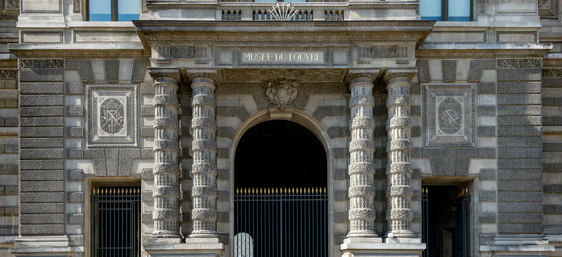




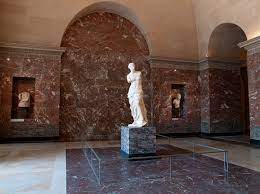




















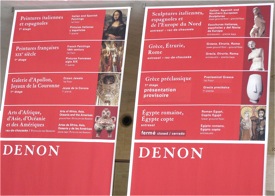






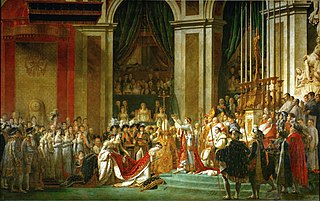










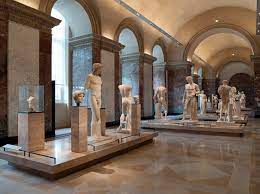




















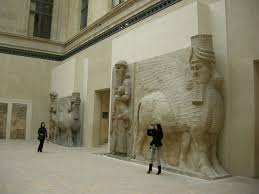
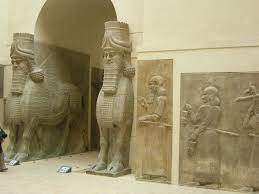
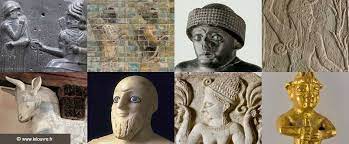

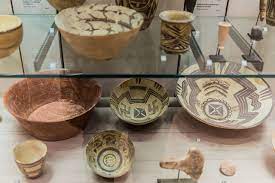



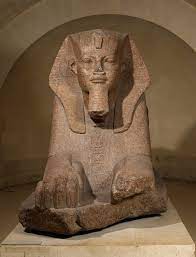
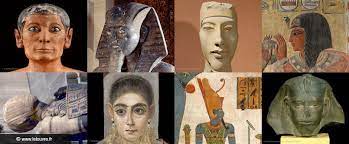

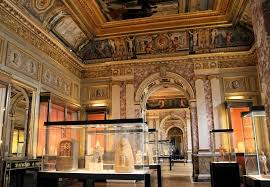
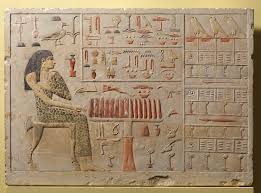




















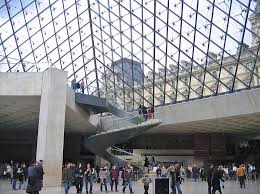

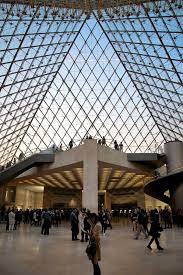







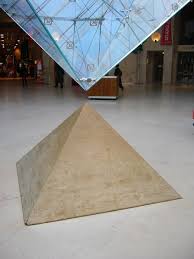



Comentários